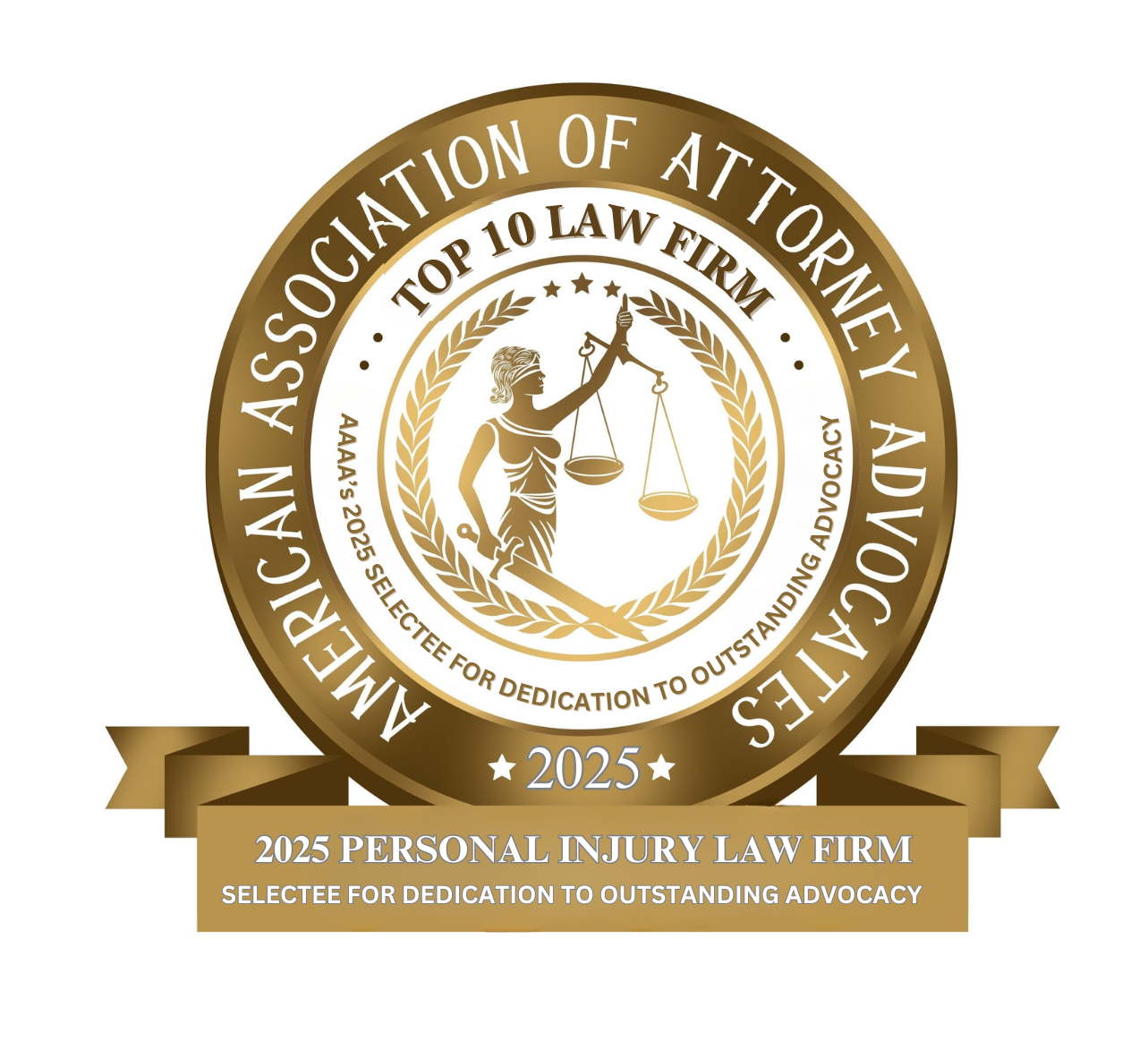Illinois Steering Wheel Injury Lawyers
Award-Winning Attorneys for Victims of Rib Fractures and Internal Organ Damage from Steering Wheels
Steering wheel injuries are a serious and sometimes overlooked consequence of car accidents. When the driver’s chest, abdomen, or head strikes the steering wheel, or when a broken or damaged steering column intrudes into the occupant space, the result can be broken ribs, internal organ damage, cardiac injury, facial fractures, and long-term disability. In Illinois, where frontal collisions remain a leading cause of injury and death on the road, steering wheel–related trauma continues to be an important focus for crash investigators, medical professionals, and vehicle designers.

At John J. Malm & Associates, we understand the devastating impact that motor vehicle accidents can have on Illinois families, especially when they result in serious injuries caused by steering wheel impact. With over 90 years of combined experience representing injured victims across the state, our firm has earned a reputation for success in complex personal injury and product liability cases, including those involving vehicle defects and severe chest or internal trauma. Our team of dedicated Illinois car accident lawyers knows what it takes to uncover the truth behind the crash, hold negligent parties accountable, and secure the full and fair compensation our clients deserve. When your health, livelihood, and future are on the line, you need a law firm that will stand up to big insurance companies and manufacturers and fight for you at every turn.
“A steering wheel injury can change a person’s life in an instant. At John J. Malm & Associates, we focus on getting clients immediate medical care, preserving critical evidence like vehicle components and photos, and bringing in engineers and medical experts to show how the crash caused the injury. Having a thoughtful, well-documented case from the start protects your rights and helps achieve fair compensation.” — John J. Malm, Naperville injury lawyer
How Steering Wheel Injuries Happen
Steering wheel injuries most often occur in head-on crashes or other collisions where the driver’s torso moves forward toward the instrument panel. Contributing factors include:
- Insufficient restraint or improper belt position: even when a seat belt is used, suboptimal positioning (belt too high or shoulder strap behind the occupant) increases forward motion.
- Airbag non-deployment or delayed deployment: Airbags are designed to reduce direct steering wheel contact. If an airbag fails to deploy or deploys late, the risk of direct steering wheel impact and severe thoracic injury rises.
- Steering wheel deformation and intrusion: In high-energy impacts, the steering wheel rim or hub can deform or push rearward into the driver’s compartment. Studies show steering wheel deformation correlates with specific and serious chest injury patterns.
- Driver stature and seating position: Drivers sitting close to the wheel or who are shorter/taller than vehicle design assumptions face different risk profiles for head, face, and chest contact.
Even with modern safety systems (seat belts, airbags), steering wheel impacts still account for a meaningful share of moderate-to-severe thoracic injuries documented in crash-involved drivers.
Common Injuries Caused by Steering Wheel Impacts
Steering wheel contact causes a spectrum of injuries, from superficial bruising to life-threatening internal trauma. Common injury types include:
- Broken ribs and flail chest condition.
- Sternum fractures and sternal contusions.
- Pulmonary contusion (bruised lung) and pneumothorax (collapsed lung).
- Cardiac contusion and, in rare cases, commotio cordis or other cardiac complications.
- Liver, spleen, and abdominal organ injuries from high-energy anterior loading.
- Head and facial fractures when the steering wheel is struck during a forward motion or when restrained occupants “submarining” under the belt contact the rim.
- Lacerations and penetrating-type injuries from steering wheel components (e.g., sharp edges created when a wheel deforms).
These injuries often require specialized trauma care, imaging (CT scans, chest X-rays), and sometimes surgery. Mortality and long-term disability are more likely when multiple organ systems are involved, when the chest injury is severe (multiple rib fractures, flail chest), or when the diagnosis is delayed.
Common Treatments for Steering Wheel Injuries
Treatment depends on the injury pattern and severity:
- Minor rib fractures: pain control, breathing exercises, and time; most heal in 6–8 weeks, but can be painful and limit activity.
- Multiple rib fractures or flail chest: may require hospitalization, respiratory support, and sometimes surgical fixation. Recovery can take months and may leave chronic pain or decreased pulmonary function.
- Pulmonary contusion/pneumothorax: chest tubes, oxygen therapy, and monitoring; complications can be life-threatening.
- Cardiac contusion: monitoring, ECGs, and cardiology follow-up to watch for arrhythmias or structural injury.
Recovery timelines vary widely. Even “non-surgical” injuries may produce months of disability and substantial medical bills. Proper documentation of functional limitations and work loss is essential for legal claims.
Illinois Crash Context
Understanding steering wheel injury risk requires seeing the larger picture of Illinois crash patterns:
- The Illinois Department of Transportation’s 2023 Crash Facts report shows that Illinois had roughly 299,000 reported crashes in 2023, with a substantial number producing “A” (serious) and “B” (minor) injuries.
- Frontal impacts are a leading cause of driver and right-front passenger fatalities and moderate-to-critical injuries nationwide. NHTSA data emphasize that frontal crashes generate the majority of driver chest injuries, making steering wheel impact an ongoing concern despite airbags and seat belts.
- Illinois trends from 2019–2023 indicate year-to-year fluctuations in total crashes and in serious injuries. While occupant belt use and vehicle safety features have improved outcomes for many crashes, frontal collisions still produce the highest share of serious thoracic injuries that can result from steering wheel contact.
Because Illinois crash data are collected and reported by IDOT, specific counts of “steering wheel injuries” are not labeled separately in public crash fact sheets. Instead, investigators and researchers identify thoracic injury patterns (rib fractures, chest AIS codes) and correlate those patterns to steering wheel deformation, intrusion, and occupant kinematics in case-level studies. For precise counts of rib fractures or steering-wheel-specific injuries, researchers use hospital trauma registries, linked police reports, or biomechanical reconstructions rather than summary crash tables.
Why Steering Wheels and Steering Column Design Matter
Vehicle design directly affects the severity of steering wheel injuries:
- Deformable structures and energy absorption: steering columns that collapse or are designed to dissipate energy can reduce the force transmitted to the driver. Conversely, stiff components or aftermarket modifications can worsen injury severity. Research has shown that steering wheel deformation patterns and stiffness influence abdominal and thoracic injury risk.
- Airbag integration: Modern airbags are intended to prevent direct hard contact with the wheel. When an airbag deploys properly, it significantly reduces chest loading from the wheel. However, airbag malfunctions or the presence of aftermarket/degraded inflators can create dangerous outcomes and have led to high-profile recalls.
- Aftermarket changes and decals: regulators have warned about aftermarket attachments (decorative emblems, rhinestones) to steering wheel or airbag covers that can become projectiles or interfere with airbag function. Removing such items is a simple preventive step.
Car manufacturers, safety regulators, and independent researchers continue to study steering wheel geometry, collapse behavior, and rim stiffness because even small design changes can meaningfully change human injury outcomes in real-world crashes.
Immediate Steps To Take If You Suspect a Steering Wheel Injury
After a crash, early recognition and documentation help both medical recovery and any later legal claim:
- Seek emergency medical evaluation immediately. Chest injuries can worsen quickly. Rib fractures, pneumothorax, or internal bleeding may not be obvious at the scene. If you feel chest pain, shortness of breath, dizziness, or palpitations, go to the emergency room.
- Document the crash scene and vehicle damage. Take photos of the steering wheel (deformation, steering column position), airbag status (deployed or not), seat belt marks, and the overall vehicle interior. These images can be crucial evidence.
- Preserve the vehicle (don’t repair it) until investigators or your attorney inspect it. Important mechanical evidence can be lost if the car is repaired before a proper forensic inspection.
- Follow up with specialists. Pulmonologists, thoracic surgeons, and cardiologists may be needed for severe chest trauma. Obtain and keep all medical records, scans, and bills.
- Contact a lawyer experienced in vehicle injury and product liability cases. Cases involving steering wheel deformation or airbag malfunction may involve vehicle manufacturers, part suppliers, or maintenance/repair shops; an attorney can coordinate crash reconstruction and medical expert opinions.
How Attorneys Investigate Steering Wheel Injury Claims
A strong legal response to steering wheel injuries typically requires careful gathering of both medical and engineering evidence:
- Medical documentation: ER notes, imaging (X-ray, CT), operative reports, and long-term treatment records establish the injury, treatment, and prognosis.
- Accident reconstruction: engineers analyze vehicle damage, steering wheel deformation, airbag deployment timing, and occupant kinematics to link the biomechanical cause to the injury.
- Parts inspection and chain of custody: if an airbag inflator or steering column component is suspected, it must be preserved and tested by experts; recalls and manufacturer service bulletins may be relevant.
- Liability analysis: determining fault may involve other drivers, road maintenance entities, manufacturers (design or manufacturing defects), or even vehicle service centers (improper repairs).
Because the evidence required often goes beyond a standard police report, attorneys commonly work with medical specialists and biomechanical engineers to build a complete, persuasive case.
Preventing Steering Wheel Injuries
While crash avoidance is the primary prevention, occupants and vehicle owners can take actions to reduce risk:
- Always wear the seat belt correctly (lap belt low on hips, shoulder belt across chest).
- Maintain a safe seating distance. Sit at least 10 inches from the center of the steering wheel when possible; shorter distances increase chest loading in a crash.
- Keep vehicles in manufacturer-recommended repair condition, and avoid aftermarket modifications to the steering wheel or airbag cover.
- Respond to recalls. If your vehicle is under recall for airbag or steering components, get the remedy from the dealer promptly. Recent recalls for inflators and airbags demonstrate the real-world danger of defective components.
Frequently Asked Questions about Steering Wheel Injuries in Illinois
Q: Are steering wheel injuries common?
A: Steering wheel injuries are a recognized outcome of frontal and near-frontal crashes. While modern restraints and airbags have reduced many severe outcomes, frontal impacts still account for a large portion of driver chest injuries.
Q: Will my seat belt cause my ribs to break in a crash?
A: Seat belts can cause bruises or rib fractures in high-energy crashes, but they reduce overall mortality and serious injury. The alternative, unrestrained impact with the steering wheel or windshield, typically causes more severe outcomes.
Q: What if my airbag did not deploy and I hit the steering wheel?
A: Non-deployment may be relevant to liability. Investigators examine crash severity, sensor/airbag system function, and whether the crash met deployment thresholds. If the airbag failed when it should have deployed, the vehicle manufacturer or supplier may be liable.
Q: Can a decorative emblem on a steering wheel cause injury?
A: Yes. Regulators have warned that aftermarket or decorative attachments can become projectiles during airbag deployment or interfere with airbag function.
Q: What evidence matters most in a steering wheel injury claim?
A: Key evidence includes medical records and imaging, photos of vehicle interior and steering wheel damage, airbag module condition, police and crash scene reports, and expert reconstruction linking the collision forces to the injury pattern. Preserving the vehicle and parts is often essential.
When to Contact an Illinois Personal Injury Lawyer
Contact an experienced Illinois personal injury attorney if you or a loved one suffered chest or abdominal trauma in a crash and any of the following apply:
- You required emergency treatment, hospitalization, surgery, or ongoing care.
- The steering wheel or airbag shows evidence of deformation or unusual damage.
- The other driver was clearly at fault, or there isa dispute about fault.
- You suspect a vehicle defect (airbag, inflator, steering column) or aftermarket modification contributed to the injury.
- You face mounting medical bills, lost income, or long-term disability.
An attorney can preserve the vehicle for inspection, coordinate with biomechanical and medical experts, and pursue claims against responsible parties, whether other drivers, governmental entities (in rare roadway defect cases), or manufacturers and parts suppliers.
Contact the Experienced Illinois Steering Wheel Injury Attorneys at John J. Malm & Associates
Steering wheel injuries are far more than just “bruised ribs” or short-term pain; they can result in life-threatening internal damage, permanent disability, and overwhelming medical expenses. If you or a loved one has suffered serious injuries after striking the steering wheel in a crash, act quickly to protect your rights.
At John J. Malm & Associates, we know how to prove liability, preserve critical vehicle evidence, and build strong claims against negligent drivers, auto manufacturers, and insurers who try to deny responsibility. Contact us today for a free, no-obligation consultation. Let us help you get the answers, medical care, and financial recovery you deserve. Your path to justice begins now.















